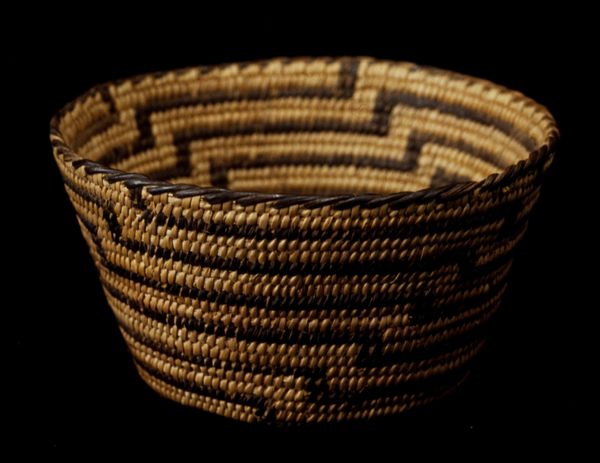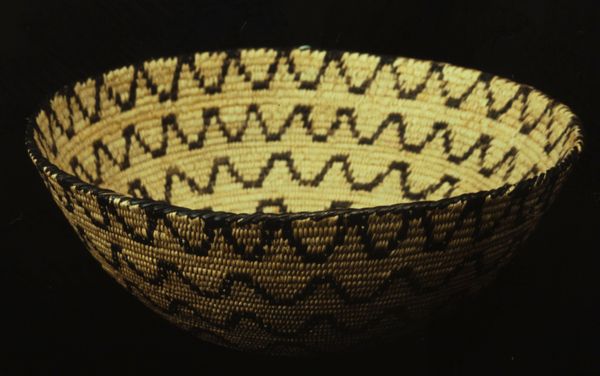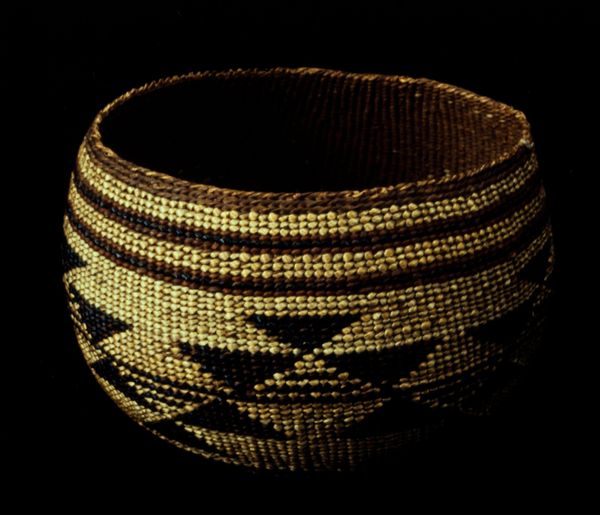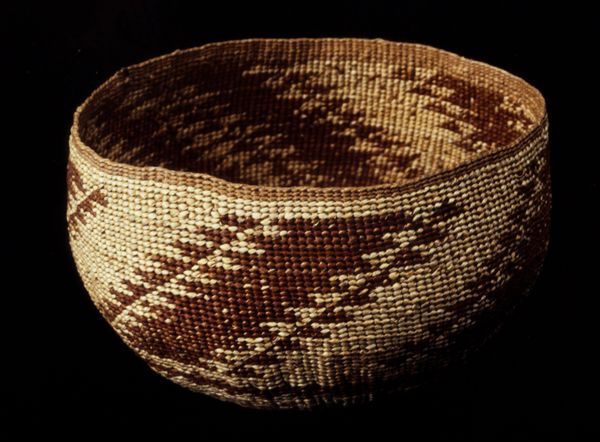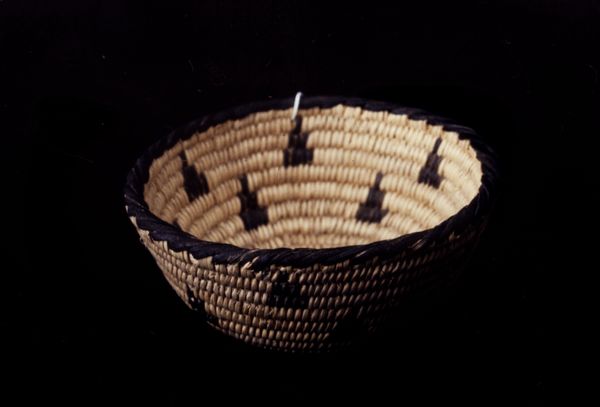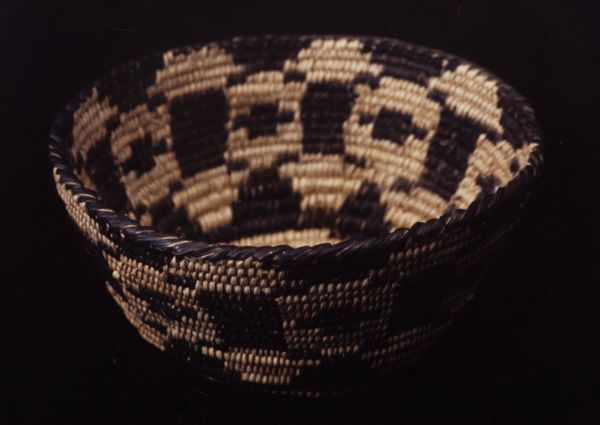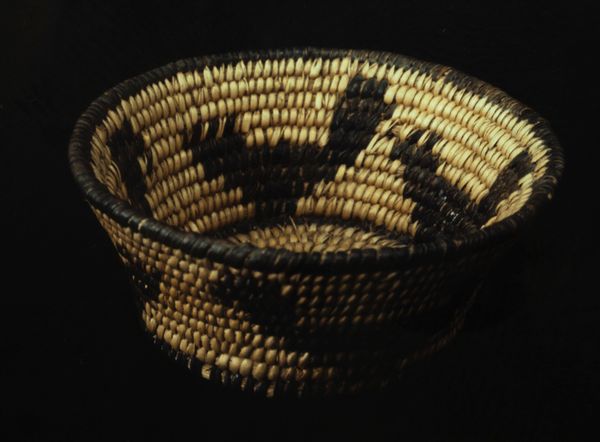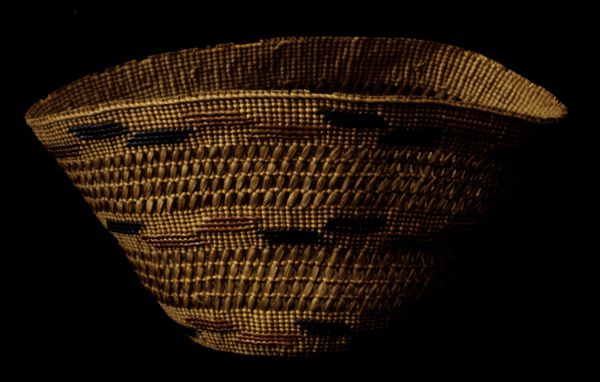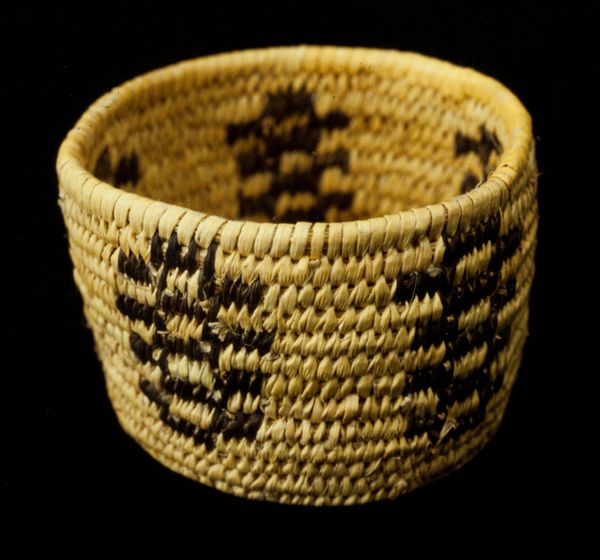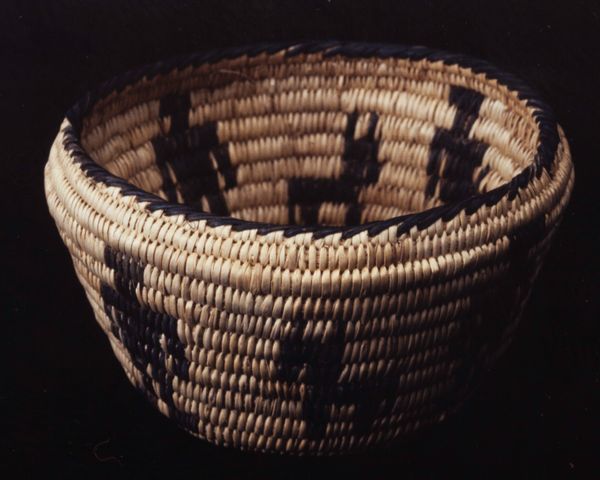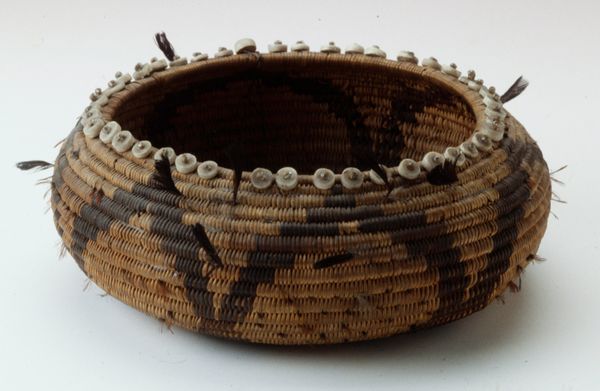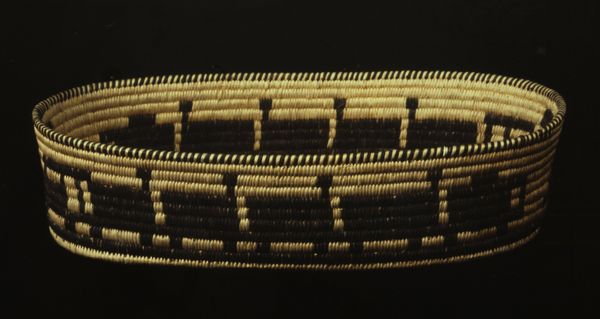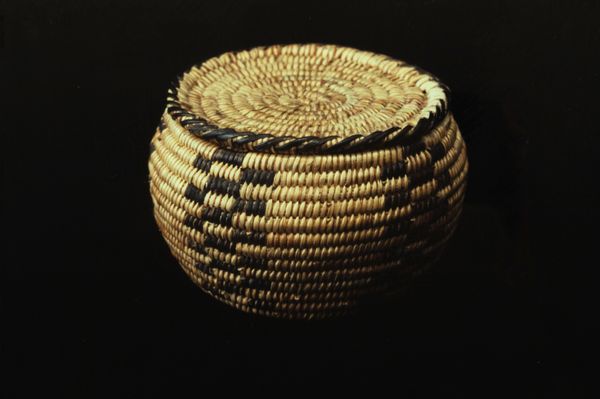
weaving, textile
#
natural stone pattern
#
dark theme
#
dark object
#
dark design
#
detailed texture
#
weaving
#
textile
#
dark tone
#
stoneware
#
macro shot
#
dark focal point
#
geometric
#
black object
#
indigenous-americas
Dimensions: 2.75 x 5.75 x 5.75 in. (7.0 x 14.6 x 14.6 cm)
Copyright: Public Domain
This basket was woven by the Tohono O'odham people, also known as the Papago. Notice the geometric patterns, these motifs are far more than mere decoration. They act as a powerful means of cultural expression. The stepped fretwork, for example, is an emblem that echoes across time and cultures. From ancient Greece to the pottery of the American Southwest, this symbol speaks to a universal human desire for order, progress, and perhaps even a pathway through life's labyrinth. Think about the swastika, for instance, which started as a symbol of good fortune, only to be consumed by the shadow of history. These symbols change meanings and take on new implications, influenced by unconscious cultural memory and contemporary contexts. The basket itself, an object of containment, may also symbolize the womb or the cyclical nature of life, engaging us on a deep, subconscious level. These symbols are non-linear; they progress cyclically, resurfacing, evolving, and taking on new meanings in different historical contexts.
Comments
minneapolisinstituteofart almost 2 years ago
⋮
These shapes were most commonly made for the tourist market by the Akimel O’othom and Tohono O’odham in the mid twentieth century. During their construction, while the materials are moist and soft, the walls or sides of the basket are pounded between two stones. This flattens the coils and produces a very smooth, level surface.
Join the conversation
Join millions of artists and users on Artera today and experience the ultimate creative platform.
